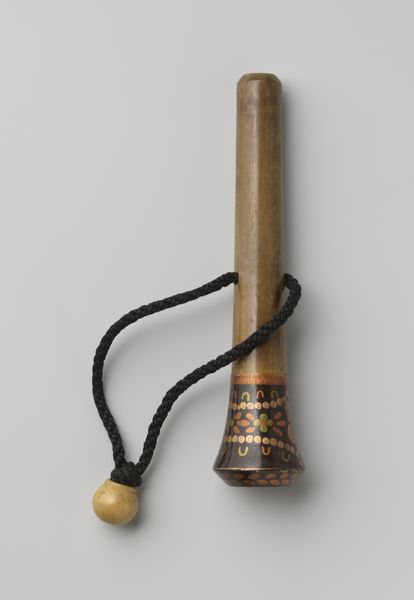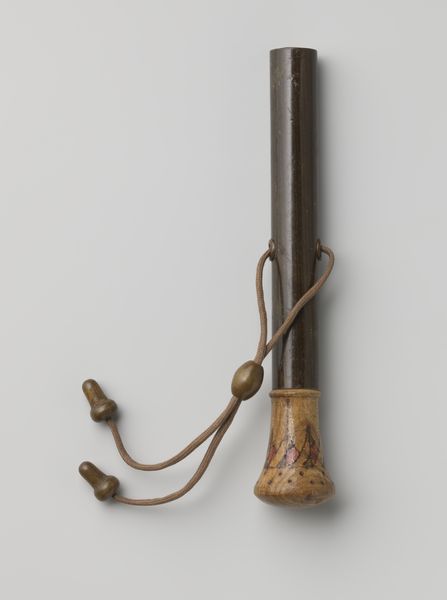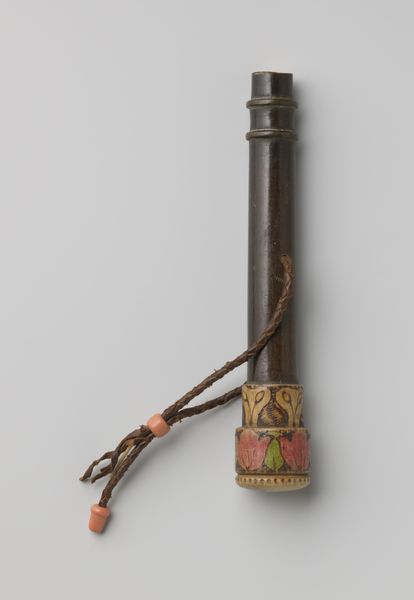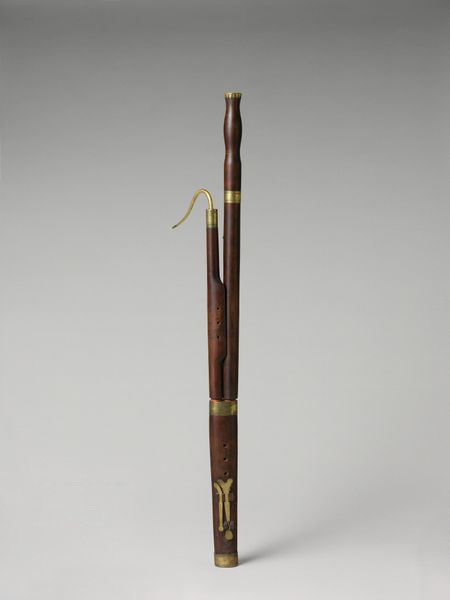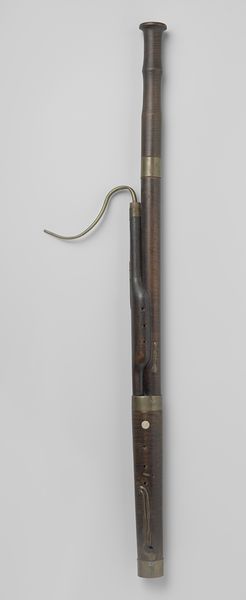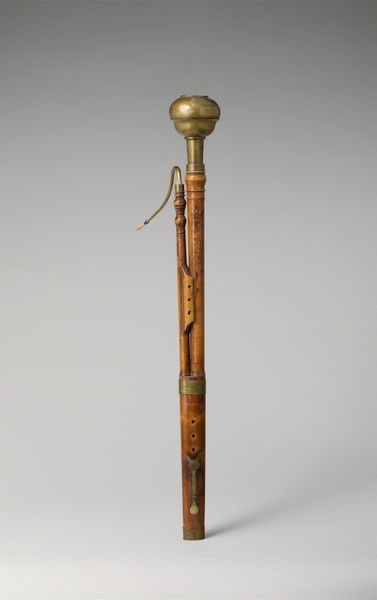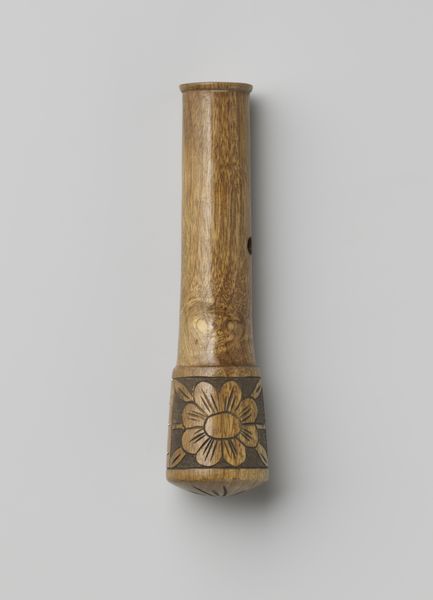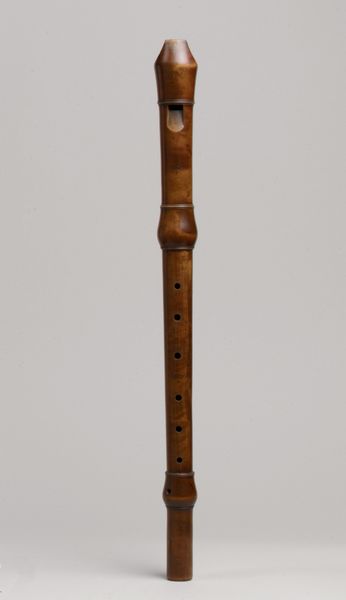
Handvat en knop uit één stuk bamboe voor een parasol of paraplu; met riem van gevlochten leer c. 1910 - 1920
0:00
0:00
gustavschnitzler
Rijksmuseum
wood
#
arts-&-crafts-movement
#
wood
#
decorative-art
Dimensions: length 18 cm, diameter 2.2 cm
Copyright: Rijks Museum: Open Domain
Curator: Standing before us, we have an object by Gustav Schnitzler, dating from around 1910 to 1920. The Rijksmuseum lists it as "Handle and button of one piece of bamboo for a parasol or umbrella; with strap of braided leather". Editor: My goodness, it exudes a sort of quiet elegance, doesn't it? Something about the light catching the bamboo, the simple lines… almost meditative in its plainness. Curator: Absolutely. It embodies many principles of the Arts and Crafts movement, this embrace of honest materials, handcraftsmanship… a reaction against industrialization and mass production. It’s such a humble, everyday thing elevated to something quite beautiful. We often overlook these functional designs. Editor: And think about what this represents – labor, design choices, consumer culture of the time. What sort of status would the owner of the parasol or umbrella using this have? Curator: Intriguing thoughts, of course. However, I get lost thinking of the bamboo stalk itself. All those years in the sun, drinking in the light, before being carved and burnished... It makes you appreciate the process, even from this remove. Editor: True. And I’d venture the anonymous artisan poured so much into such seemingly simple craft. Imagine carefully selecting that piece of bamboo, aware of grain and structure and potential fault lines. Curator: See, to me, it speaks to the maker’s deep understanding of material. They worked with the bamboo’s inherent properties, didn't try to force it into something it wasn't. So often craft reflects collaboration with natural elements. Editor: A poignant reflection. This is more than just an aesthetic object; it's a trace of labour. Curator: You are right. The artist has subtly transformed something completely ordinary into a moment of reflection. That’s powerful!
Comments
No comments
Be the first to comment and join the conversation on the ultimate creative platform.
